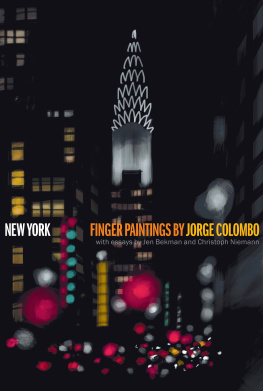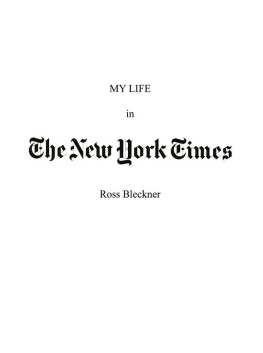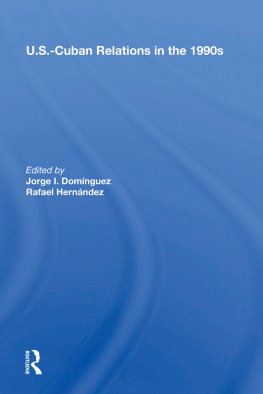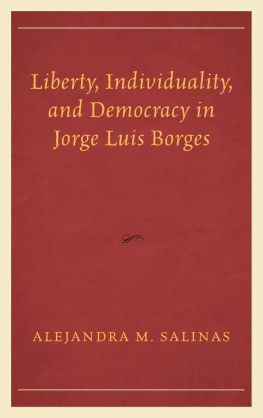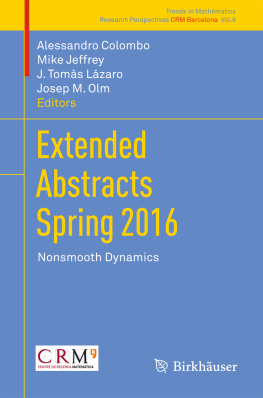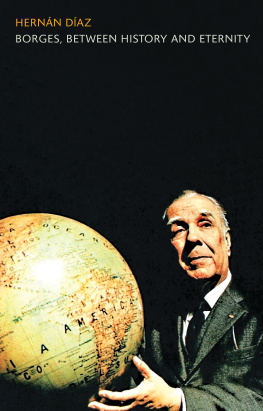For my aunt Teresa Colombo.
INVISIBLE CITY
BY CHRISTOPH NIEMANN

MY FAVORITE DRAWING IN THIS BOOK IS THE NIGHT VIEW OF THE CHRYSLER Building viewed from Lexington Avenue. Its not Jorges drawing thoughit belongs to me.
The chaotic and blurry mix of car and traffic lights. The patterns of night-lit office windows. The Chrysler Building, hovering above the scene like an aristocratic spaceship. I have carried that image in my head for years.
Actually, before I saw this drawing it was not one image, it was a hundred images. I have looked at this street scene countless times: getting out from the airport shuttle at Grand Central, all dizzy and jet lagged on my first trip to New York, racing to catch a Metro North train on a Friday night for a trip upstate, or walking back from a midtown dinner, late at night, fighting for a cab and usually ending up taking the subway after all. There must be millions of photos of this very view, but each of them can only represent a single facet. Jorge, on the other hand, has taken this whole pile of my accumulated mental snapshots and melted them into a single piece of art.
Like many illustrators, I constantly scout life in New York for new and unusual facets, trying to connect to the reader through high-strung irony and multi-layered references. Jorge reminds me that there is a much straighter path to the viewers mind: he wanders around town and visually records everything he sees. He devotes an even artistic love to everything he sees, whether it is a majestic skyscraper or a run-down highway bridge.
When you spend years living in a city, there comes the moment when it becomes so familiar that it almost appears invisible. Jorge seemingly just puts his focus on the surface of things, filters it through his eyes and hands, and thus helps me re-appreciate the city.
In art school, they teach you to always keep a sketchbook, and I sometimes regret not spending more time to record my very subjective impressions of New York. Looking at Jorges drawings, however, it is a relief to see that somebody else can actually do that for me.
EVEN BEFORE ID SEEN HIS WORK, JORGE AND I WERE friendly for years. I had the pleasure of chatting with him at cocktail parties and openings at my gallerythese encounters were later supplemented with a steady stream of online banter that kept (and continues to keep) me apprised of his constant creative output. As our friendship evolved, I paid keener attention to those updates, but it was a post on the venerable Design Observers website that tipped me off to the iSketches that are the subject of this book. Immediately intrigued by work that unified two of my abiding passionsNYC and technologyI was thrilled to discover that my mustachioed friend had created it, and thrilled again when he quickly agreed to work with us at 20x200 to publish physical prints of his heretofore-virtual works.
Like those prints, the drawings that follow are the result of Jorges lifelong dedication to being an artist, both in training and trade. A master in multiple mediums, Jorge has made a seamless transition from notebook sketches, illustrations, and paintings, to iPhone drawings. He was among the very first to adopt this most modern of media the touch screen of his iPhone and a popular app called Brushes.
As he wrote in the original statement that accompanied his prints on 20x200, theyre drawn on location using an iPhone application called Brushes. No photo references, no tablets, no brushes to wash: just my finger on the tiny touch screen. Dont even need a proper light: the drawing itself glows in a dark corner. Translated from screen to print, these little masterpieces are wonderful. The first time I saw the physical proof prints of them, I was amazed and giddy for days.
The iPhone has allowed Jorge to bring the digital milieu hes so familiar with out into the world with him, transforming it into his studio. But, when hes drawing in this medium, he looks like any other modern-day city-dweller distractedly attending to elsewhere as the city makes its way around him. Jorge tells me he gets a kick out of that: people think hes sending a text message or responding to an e-mail, when what hes really doing is committing a time and place to memory. I know he loves how stealthy his method is, a far cry from the conspicuous creativity of the plein-air painters easel and palette. In fact, its even less noticeable than sketching in a Moleskine, something else hes done plenty of. Jorge is always on the prowl for interesting venues to draw fromhes happy to stand or sit quietly in the corner of a friends office for hours at a time if it allows him to see the city from a new perspective.

When this very book was just a glimmer, Jorge and I met for lunch at Caf Gitane in Soho. We discussed the project, which in turn became a talk about all the other books we love. Were both serious bibliophiles with a reverence for print, so the conversation stretched on and on. After eating, we walked over to the nearby bookstore McNally Jackson and looked at books, and then the magazines. From there, our talk moved towards cinematic depictions of New York City as seen in Taxi Driver, or the brilliant single-shot chase scene in The French Connection. And then, as though saving it for that very conversation, Jorge took his phone out of his pocket to play me the opening credits of Woody Allens Manhattan. Its a sequence that Im very familiar with, and one that has partially overtaken my psyche, becoming a part of my memory as experience rather than cinema. That Jorge carries this around with him is telling, about his devotion to this city, and about how powerfully it has influenced him.
EVERYONE HAS AN IDEA OF WHAT NEW YORK IS, OR at least thinks they do, shaped by movies, books, photos. Its such a legendary setting that millions (billions) of people whove never been here in personeven those who might be otherwise unconfidentthink they know exactly what its like. Its as though the citys essence exists as common property of the worlds imagination.
Having grown up here, the idea of an unknown New York is unimaginable to me and of the idea of moving here, as Jorge did, is that too, and also, brave. Im a little jealous of anyone who gets to have clear memories of their very first New York City moments. Everybody who came here from somewhere else has a story about the first time they saw the city: coming in on an airplane or approaching the island of Manhattan via the BQE. I dont have a first memoryIve always been here. Its always been home. For newcomers, there is life before New York and then life in New York. As a native, I envy people who cultivate new memories as the city of their imaginations refracts through the lens of their new experiences. While Im thrilled and proud that living here continues to excite me every day, that before and after is something Ive never hadthe city has never been a place that lived solely in my imagination; its essence has been my reality from the very beginning.
That doesnt mean, though, that some parts of my personal version of New York City havent been shaped by others, as Jorges idea of New York was influenced by the opening credits from Manhattan. The New York of my childhood maps to the imagery in Ezra Jack Keats childrens book, The Snowy Day. Today, as an adult, it is Jorges sketches, of Grand Central Station and the exterior of the famous Katzs Delicatessen at night, that capture New York in a way that evokes my experiences and memories of the city. Jorge depicts these places with broad strokes and imprecisely shining lights, creating the impression that everything is movingthe traffic and the people, each one of us contributing to the shimmering shuffle of the citys pulse. This is the feel of the New York I know.

